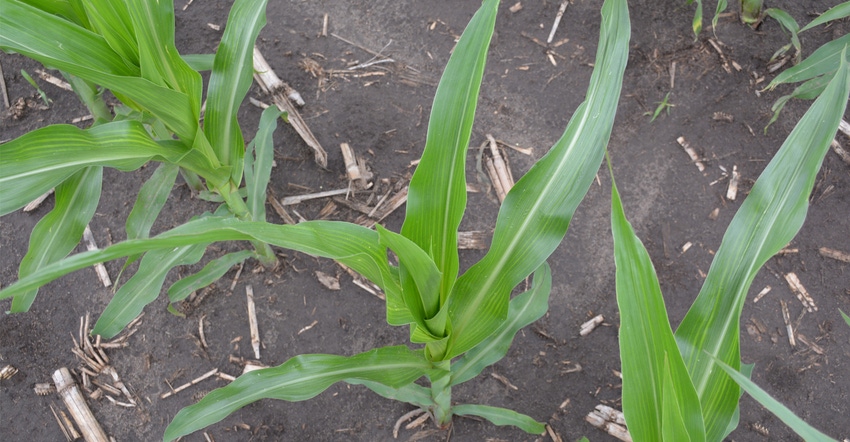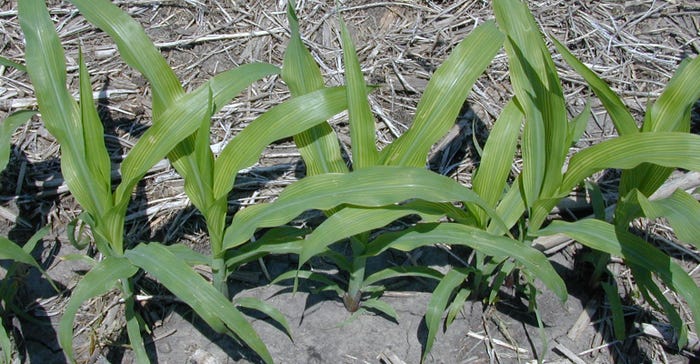June 15, 2020

Yellowing of corn plants early in the season can be confusing to diagnose. And in some conditions, there may be a period of time after corn emergence where small corn just does not look good.
Plant yellowing can be caused by a number of factors: waterlogged soils, cold temperatures, herbicide issues and potassium deficiency. Iowa State University Extension plant pathologist Alison Robertson also discusses the factor of anthracnose leaf blight in a recent Integrated Crop Management blog.
Two reasons that can be confusing due to similar plant symptoms are nitrogen and sulfur deficiency. John Sawyer, ISU Extension soil fertility and crop nutrient agronomist, provides the following information to help you distinguish between these two symptoms:
Nitrogen deficiency. The classic symptom description is yellowing of the lower (older) leaves, from the leaf tip to the base of the leaf, down the midrib.
Sulfur deficiency. The classic symptom description is yellowing of new leaves (in the whorl of the corn plant, sometimes with interveinal striping), with the lower, older leaves remaining uniformly green.

SULFUR DEFICIENCY: These are the classic sulfur deficiency symptoms on early-season corn plants. Note the yellowing of new leaves in the whorl of plant.

However, keep in mind that both N and S are tied together due to several common physiological processes. Therefore, early growth symptoms can be similar, Sawyer says. Examples include overall leaf and plant yellowing, spindly plants and interveinal striping. These similar symptoms most often occur when plants are small, and there is severe deficiency (low soil supply of the nutrient and no fertilization).
Also, plant response from fertilizer application can be quite similar for N and S, he adds. That is, good growth and green corn plants with uniform coloration. Sulfur does not move as readily in plants as nitrogen, so symptoms should differentiate on different plant parts.
However, differentiation may not happen with young plants, an early onset of symptoms, or a large and prolonged deficiency. One way to determine if an early-season deficiency is N or S is to hand-apply some S and N fertilizer to different areas and see if the plants green up.

COMPARISON: This photo shows small corn plants without sulfur application (left) and with sulfur application (right).

More pictures of corn with nutrient deficiencies can be found at the ISU Extension Soil Fertility webpage.
Source: ISU, which is solely responsible for the information provided and is wholly owned by the source. Informa Business Media and all its subsidiaries are not responsible for any of the content contained in this information asset.
You May Also Like




